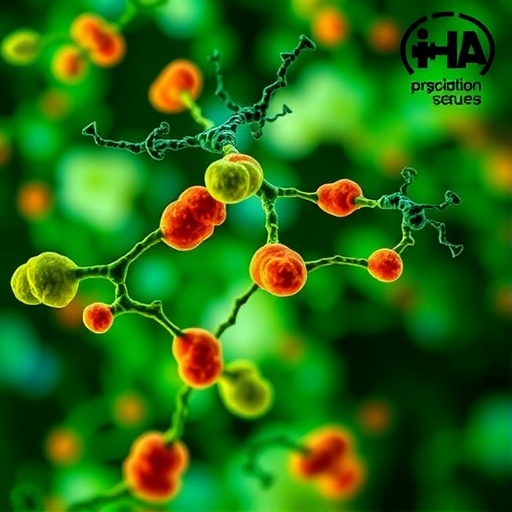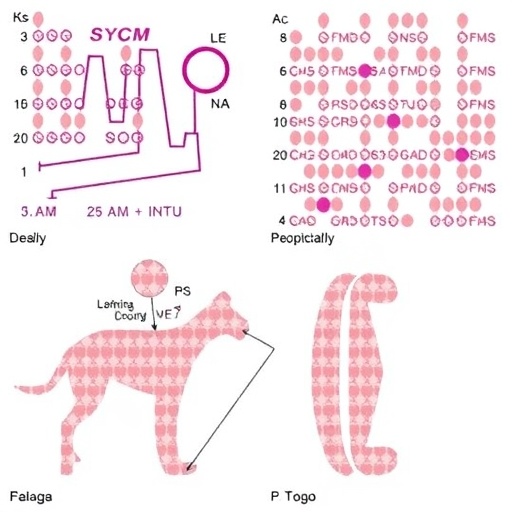Chromosomal translocations have long been recognized as a driving force in the development of various lymphomas, a diverse group of blood cancers that collectively rank as the sixth most common form of cancer globally. Among these, mantle cell lymphoma (MCL) stands out as a particularly aggressive and rare subtype, striking roughly one in every 100,000 individuals annually. Despite its rarity, the mechanisms underlying MCL have puzzled scientists due to the complexity of the chromosomal rearrangements involved and their far-reaching impact on gene activity.
Traditionally, the study of translocations in lymphoma has focused on the immediate genetic neighborhood surrounding the chromosomal breakpoints, where genes are either disrupted or incorrectly fused to form oncogenic drivers. These “cut and paste” errors can deactivate tumor suppressors or create abnormal fusion proteins that confer unchecked growth advantages to cells. However, emerging evidence indicates that this narrow view overlooks a more expansive and complex influence on the genomic landscape that extends far beyond the initial breakpoint.
A groundbreaking study recently published in Nucleic Acids Research unveils a novel mechanism by which a typical chromosomal translocation observed in mantle cell lymphoma rewires gene regulation across an unexpectedly large region of the genome. This translocation co-opts a robust gene regulatory element known as the IGH enhancer and relocates it adjacent to a cluster of genes on chromosome 11, among which the CCND1 gene is a key player. Unlike prior understanding, the enhancer’s repositioning not only amplifies CCND1 gene activity but also simultaneously affects around fifty other genes dispersed along a 50-million-base-pair stretch of DNA, revealing a previously unappreciated genome-wide ripple effect.
.adsslot_vjHUoSkw4O{ width:728px !important; height:90px !important; }
@media (max-width:1199px) { .adsslot_vjHUoSkw4O{ width:468px !important; height:60px !important; } }
@media (max-width:767px) { .adsslot_vjHUoSkw4O{ width:320px !important; height:50px !important; } }
ADVERTISEMENT
Researchers from the Centre for Genomic Regulation (CRG) in Barcelona employed state-of-the-art CRISPR gene-editing technology to engineer the hallmark chromosome translocation in healthy B cells. This innovative approach allowed them to recreate the exact genetic rearrangement seen in patients within a controlled laboratory setting. Such cellular models provide unparalleled opportunities for dissection of molecular mechanisms that are otherwise impossible to study directly in patients for ethical and technical reasons.
The experimental results were both surprising and enlightening: post-translocation, a broad swath of genes along chromosome 11 exhibited significantly elevated expression levels. This finding challenges previous assumptions that translocations would primarily exert local effects. The research team delved deeper into the structural organization of DNA within the nucleus and found that the chromosomal rearrangement reshaped three-dimensional chromatin architecture, effectively repositioning the IGH enhancer into a spatial hotspot where it could exert regulatory influence on multiple genes simultaneously.
Further molecular characterization revealed that DNA folding creates loops that bring distant genomic segments into close proximity, enabling regulatory elements like enhancers to control genes over large physical distances. The translocation inserted the IGH enhancer into one such preexisting loop, granting it privileged access to genomic territories it normally could not influence. This looping mechanism accounts for the broad-spectrum upregulation of gene activity in the affected region, amplifying the expression of genes that were already active rather than activating silent loci.
Importantly, these findings help clarify why overexpression of CCND1 alone is insufficient to induce mantle cell lymphoma. The enhancer’s ability to simultaneously amplify dozens of genes cooperating in oncogenic processes paints a more intricate picture of lymphoma pathogenesis. This multifaceted gene activation likely contributes synergistically to tumor initiation and progression, highlighting new avenues for therapeutic intervention that extend beyond targeting single gene products.
Dr. Renée Beekman, corresponding author of the study, emphasizes that the discovery redefines current paradigms in lymphoma biology. “Our data show that the repercussions of a single translocation can pervade nearly seven percent of genes on one chromosome, underscoring the magnitude of genomic disruption that can fuel cancer development,” she explains. This expansive perspective urges a revision of strategies aimed at identifying and validating cancer driver genes, as the altered regulatory landscape encompasses numerous potential targets previously unconsidered.
The authors propose that the newly uncovered mechanism might have profound implications for early disease detection. Since the IGH enhancer preferentially enhances genes already exhibiting baseline activity, profiling the epigenetic and transcriptional landscape of at-risk B cells could potentially identify aberrant regulatory states that precede overt lymphoma development. This kind of early molecular fingerprinting could transform diagnostics and enable timely intervention before full-blown disease manifests.
Looking forward, the research team plans to interrogate the precise contributions of each of the newly identified gene targets to lymphoma oncogenesis. Decoding the interplay among these genes and understanding how their concerted dysregulation is orchestrated by the translocated enhancer could unveil novel vulnerabilities in cancer cells. Such insights may pave the way for the development of multi-targeted therapies designed to dismantle the enhancer-mediated oncogenic network more effectively and durably than current approaches.
This study also highlights the power of chromosomal architecture and gene regulation as fertile grounds for cancer research. It propels an exciting frontier in oncology where spatial genomic organization is as critical as the DNA sequence itself in determining cancer-driving events. By illuminating the complex circuitry through which enhancer elements control wide gene networks across the genome, this discovery redefines the biological impact of chromosomal translocations in hematologic malignancies and potentially other cancers with similar chromosomal abnormalities.
As mantle cell lymphoma continues to pose significant clinical challenges due to its rarity and limited treatment options, these revelations offer renewed hope. Targeting enhancer hijacking and its cascade of downstream gene activation could serve as the foundation for next-generation therapies capable of achieving durable remissions. Moreover, the methodology of recreating patient-specific chromosomal rearrangements using CRISPR in normal human B cells provides a versatile platform for future mechanistic studies and drug discovery efforts across oncology.
Ultimately, this landmark study reshapes our understanding of how genomic instability drives cancer, exposing a vast terrain of oncogenic machinery controlled by regulatory elements displaced by chromosomal translocations. The far-reaching effects of such genome rewiring emphasize the need to consider the three-dimensional chromatin context and the regulatory interplay extending well beyond the immediate loci of chromosomal breakage, opening new horizons in cancer biology and therapeutic innovation.
Subject of Research: Cells
Article Title: [Information not provided in content]
News Publication Date: 22-Aug-2025
Web References: http://dx.doi.org/10.1093/nar/gkaf677
References: Nucleic Acids Research, DOI: 10.1093/nar/gkaf677
Image Credits: Roser Zaurin/Centro de Regulación Genómica
Keywords: Lymphoma
Tags: blood cancer prevalence and statisticschromosomal rearrangements and gene activitychromosomal translocations in cancerfusion proteins in cancer developmentgene regulation in lymphomagenomic landscape of lymphomainnovative lymphoma treatment approacheslymphoma researchmantle cell lymphoma mechanismsNucleic Acids Research studyoncogenic drivers in blood cancerstumor suppressor genes in lymphoma






